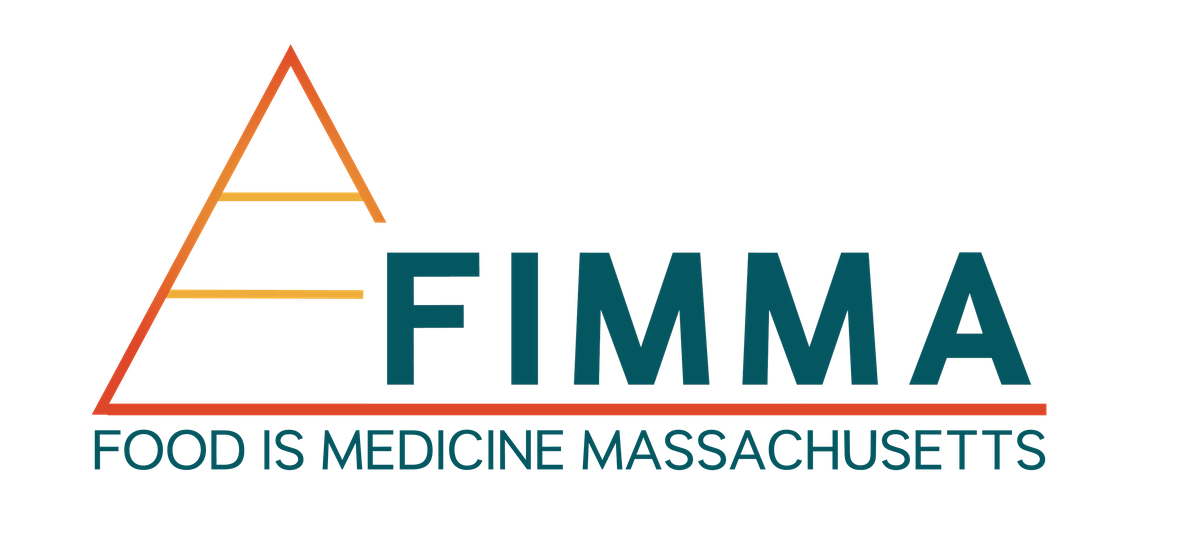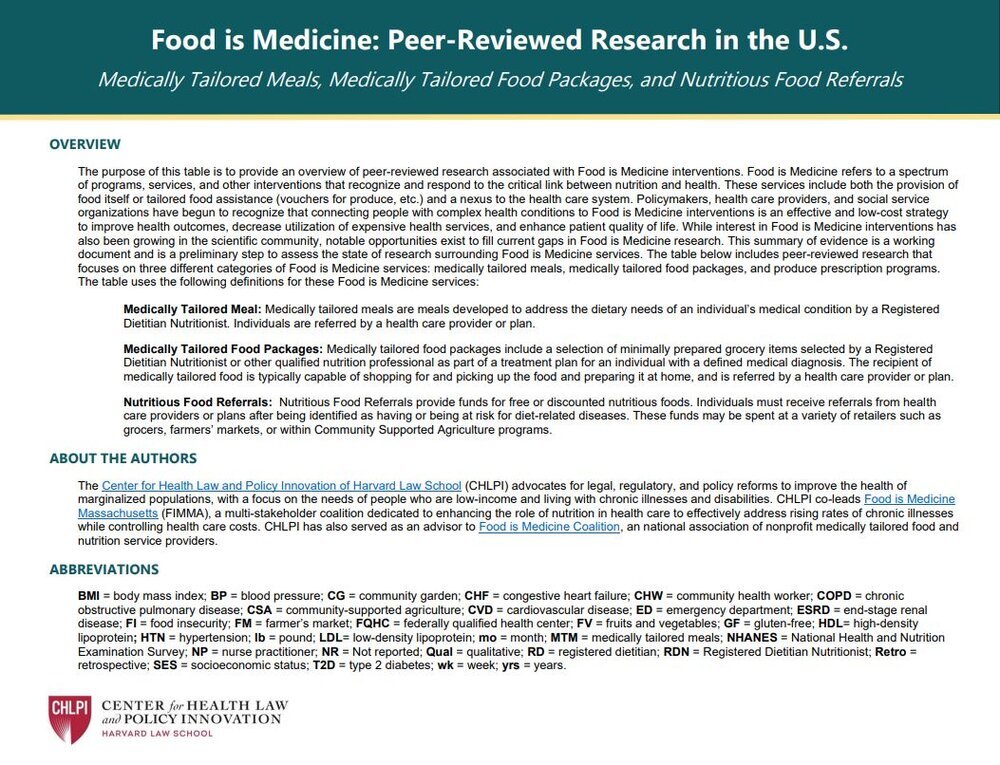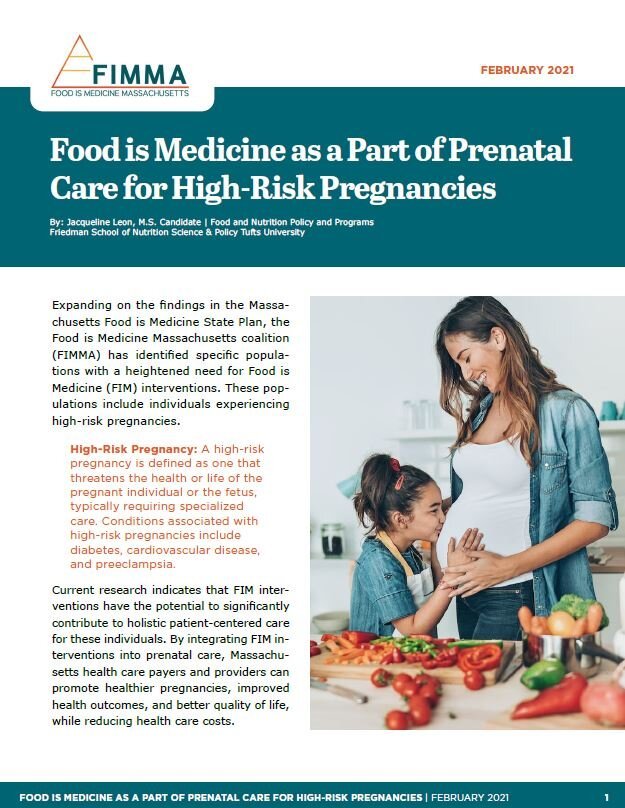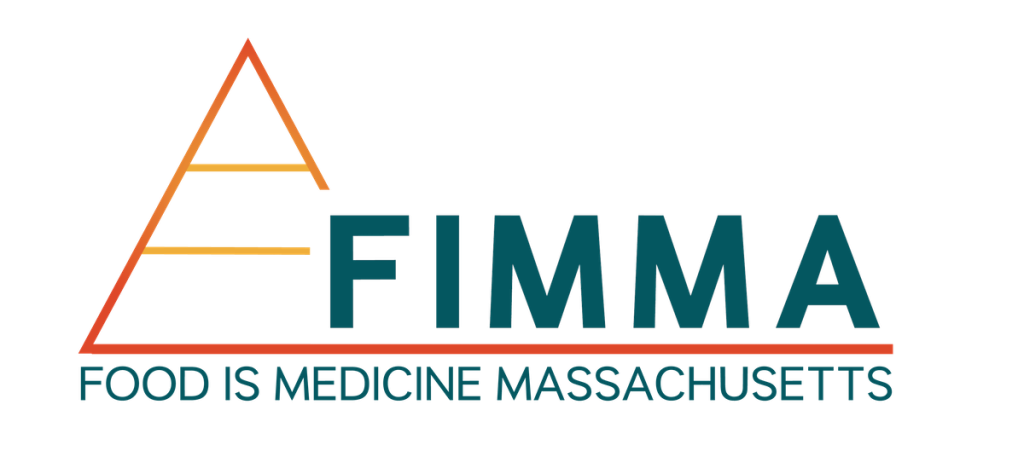Emerging research illustrates the impact Food is Medicine interventions have on improving health outcomes, lowering overall health care utilization, and lowering health care costs.
The Center for Health Law and Policy (CHLPI) compiled peer-reviewed research associated with Food is Medicine interventions, Food is Medicine: Peer-Reviewed Research in the U.S. Food is Medicine refers to a spectrum of programs, services, and other interventions that recognize and respond to the critical link between nutrition and health. Interventions included in this summary of evidence include medically tailored meals, medically tailored food packages, and nutritious food referrals (including produce prescription programs). Reviewing the research allows policymakers, health care providers, social service organizations and public health practitioners to recognize the impact that these programs can have on dietary intake, health outcomes, and health care utilization. Additionally, it can be used as a tool to identify gaps in the evidence base to inform future research initiatives.
Food is Medicine as Part of Prenatal Care for High-Risk Pregnancies
Expanding on the findings in the Massachusetts Food is Medicine State Plan, the Food is Medicine Massachusetts coalition (FIMMA) has identified specific populations with a heightened need for Food is Medicine (FIM) interventions. These populations include individuals experiencing high-risk pregnancies.
High-Risk Pregnancy: A high-risk pregnancy is defined as one that threatens the health or life of the pregnant individual or the fetus, typically requiring specialized care. Conditions associated with high-risk pregnancies include diabetes, cardiovascular disease, and preeclampsia.
Current research indicates that FIM interventions have the potential to significantly contribute to holistic patient-centered care for these individuals. By integrating FIM interventions into prenatal care, Massachusetts health care payers and providers can promote healthier pregnancies, improved health outcomes, and better quality of life, while reducing health care costs.
This resource outlines the role Food is Medicine services can play in prenatal care for high-risk pregnancies, summarizes relevant research, and offers recommendations to policymakers/payers, health care providers, and CBOs/Food is Medicine providers.
Selection Intervention-Specific, Peer Reviewed Research
Medically Tailored Meal Programs
Receipt of MTM services (10 meals delivered weekly) was associated with significantly fewer inpatient admissions, (incidence rate ratio [IRR], 0.51; 95% CI, 0.22-0.80; risk difference, -519; 95% CI, -360 to -1457 per 1000 person-years).
Intervention receipt was associated with fewer skilled nursing facility admissions (IRR, 0.28; 95% CI, 0.01-0.60).
The model estimated that, had everyone in the matched cohort been encouraged into treatment (and including the cost of program participation), mean monthly costs would have been $3838 vs $4591 if no one had been encouraged into treatment (relative risk of mean per person per month expenditures difference, 0.84; 95% CI, 0.67-0.998; risk difference, -$753; 95% CI, -$1225 to -$280), representing approximately 16% lower health care costs.
In a randomized cross-over study, when participants with type 2 diabetes received medically tailored meals, they experienced substantially improved diet quality as measured by the 2010 USDA Healthy Eating Index (HEI).
The average HEI score (out of 100 possible points, with 100 representing the healthiest diet) for participants on medically tailored meals was 73.1, in comparison the average HEI score without medically tailored meals was 39.9 (p<.0001).
While receiving medically tailored meals, participants also reported lower food insecurity (42% “on-meal” vs. 62% “off-meal”), less hypoglycemia (47% “on-meal” vs. 64% “off-meal”) and fewer days where mental health interfered with quality of life (5.65 vs. 9.59 days out of 30) (all p<.05).
Individuals dually eligible for Medicare and Medicaid who received medically tailored meals from Massachusetts-based Community Servings for 6 months had 50% fewer inpatient admissions and 70% fewer emergency department visits than similar patients not enrolled in the meal program (p<.05).
Researchers found an average net savings of $220 per patient per month (16% savings on total medical expenditures) after factoring in the costs of the medically tailored meals.
Adherence to antiretroviral therapy for HIV patients increased from 47% at baseline to 70% (p = 0.046) at the end of the 6-month intervention.
Diabetes distress (p < 0.001) and perceived diabetes self-management (p = 0.007) improved for patients with type 2 diabetes after 6 months of medically tailored meals.
The study observed decreased depressive symptoms (p = 0.028) and decreased binge drinking (p = 0.008) at the end of the intervention for all diagnoses.
Fewer participants sacrificed food for health care (p = 0.007) or prescriptions (p = 0.046), or sacrificed health care for food (p = 0.029) once they were connected to medically tailored meals.
The total average monthly health care costs for recipients of medically tailored meals were 31% lower than the comparison group ($28,000 vs.$41,000) at the end of the three-month intervention (p=.0006).
93% of the treatment group with inpatient hospitalizations were discharged to their homes as compared to only 18% of the comparison group (p=.0001).
Medically Tailored Food Packages
Participants in a 6-month medically tailored food intervention received diabetes-appropriate food, blood sugar monitoring, primary care referrals, and self-management support.
Among participants with elevated HbA1c (at least 7.5%) at baseline, HbA1c improved from 9.52% to 9.04% (p<.0001).
Fruit and vegetable intake increased from 2.8 to 3.1 servings per day (p<.001), self-efficacy increased (p<.0001), and medication adherence increased (p<.001).
Produce Prescription/Produce Prescription+ Programs
If enacted on a national level over a lifetime, a 30% subsidy on fruit and vegetable purchases by enrollees in Medicare and Medicaid would prevent 1.93 million Cardiovascular Disease (CVD) events, gain 4.64 million quality-adjusted life years and save $39.7 billion in formal health care costs.
Compared to no intervention, a 30% fruit and vegetable subsidy would increase mean intakes of fruits by 0.4 servings/day and vegetables by 0.4 servings/day.
A similar 30% subsidy on broader healthful foods enacted over a lifetime including fruits and vegetables, whole grains, nuts/seeds, seafood, and plant oils would prevent 3.28 million CVD events and 0.12 million diabetes cases, gain 8.4 million quality-adjusted life years, and save $100.2 billion in formal health care costs.
A fruit and vegetable prescription program at a Federally Qualified Health Center led to decreased HbA1c levels in patients with uncontrolled type 2 diabetes living in a low-income neighborhood in Detroit.
Patients receiving produce prescriptions of $10 / week for 4 weeks at a clinic in Detroit had a decrease in HbA1c from 9.54% to 8.83% (p=0.001).
Participants receiving a CSA membership that provided a weekly farm produce pickup from June to November saw increased Healthy Eating Index scores (4.3 higher, 9% CI=0.5, 8.1, p=0.03) compared to individuals who recieved healthy eating information and financial incentives similar to the intervention group.
Analyses of HEI subscores revealed significant improvements in categories clearly associated with the food provided (total vegetables, total fruit, and whole fruit) and lower consumption of empty calories, such as sugar-sweetened beverages.
The difference in decreases in food insecurity between groups, adjusting for baseline food security, was in favor of the intervention (RR=0.68, 95% CI=0.48, 0.96).
Each Veggie Rx prescription coupon booklet contained thirteen coupons, each for one week’s worth of produce, $US 7 in value, which could be redeemed at Capital Roots’ Veggie Mobile, a mobile produce market that travels to inner-city neighborhoods.
Study findings indicate that individuals who consistently participated in a healthy food incentive programme for at least five non-consecutive weeks experienced positive changes in body weight status, as indicated by the statistically significant decrease in BMI, whereas the matched control group experienced a slight increase in BMI.
The Veggie Rx case group members experienced a mean decrease in BMI of 0.74 kg/m2, whereas the non-Veggie Rx control group members reported a mean increase in BMI of 0.35 kg/m2.
A produce prescription for hypertension program involved 3 monthly, nonphysician provider visits, comprising blood pressure measurement, nutrition counseling, and four $10 farmers market produce vouchers for hypertensive adult patients screening positive for food insecurity.
Among participants, daily fruit consumption increased from a mean (SD) of 1.6 (1.3) servings to 2.4 (1.2) servings (P < .001), and daily vegetable consumption increased from a mean (SD) of 1.7 (1.1) servings to 2.5 (1.3) servings (P <.001).
Fast food consumption significantly decreased for participants from a mean of 1.3 days per week to 0.7 days per week (P < .001).
Study participants visited at least 1 farmers market, reported increases in provider communication related to diet, and exhibited significant changes in dietary behavior.
Community Level Healthy Food Programs and Anti-Hunger Programs
Primary care patients screened for unmet social and nutrition needs using the Health Leads program were referred to community-based nutrition assistance programs.
The evaluation found improvements in blood pressure (p<.05) and cholesterol levels (p<.05), but not blood glucose level when compared with the control group.



